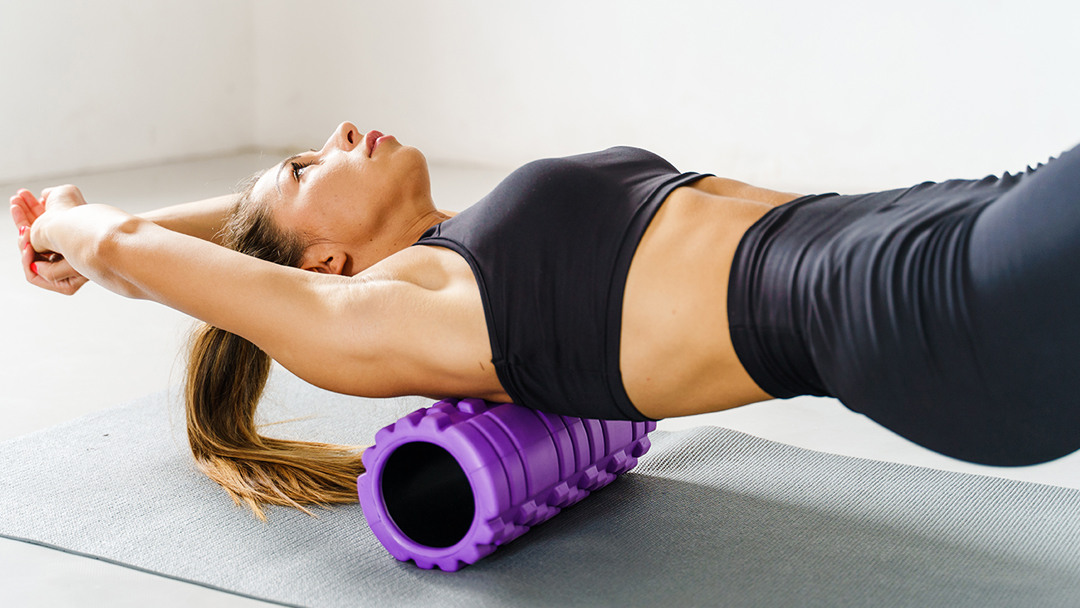Foam Rolling: When, For How Long And How Does It Benefit Us?
The foam roller is a mainstay in the arsenal of many modern gyms all over the world. What is foam rolling after all and why is it worth doing?
How it benefits us
1.Foam rolling helps us recover quickly after an intense workout
For many people, athletes or not, the biggest challenge lies not in the actual training itself but in the recovery that takes place after training. Foam rolling is an excellent way for someone to speed that process up.
Research shows that athletes who had 20-minute foam rolling sessions three times after their workout (immediately afterwards, 24 hours later, 48 hours later) significantly improved their performance in contrast with the other athletes who did not foam roll after their workout.
2. Foam rolling prevents us from being too sore after training
Whenever we take part in a gruelling workout or are on an extended hiatus from training, a limiting factor for our return to the gym is the unbearable soreness we are in for.
You may have felt how tough it is to climb a set of stairs after an intense leg workout or to put on a shirt after a back workout.
The same reasearch suggested above shows that athletes who followed this foam rolling protocol had fewer DOMS (Delayed Onset Muscle Soreness) symptoms when compared to their teammates. Not only did they not get as sore as them but they also exhibited an enhanced range of motion and muscular activation after a short 20-minute foam rolling session.
3.It helps in improving arterial stiffness
You may already be aware that self-myofascial release (SMR) techniques with a foam roller can help you restore muscles, tendons and soft tissue. But did you know that it can also help lessen the symptoms of arterial stiffness? Foam rolling has actually been proven to do so.
4. Improved range of motion(ROM) for better performance and fewer injuries
With the foam rolling improving our range of motion we become more adept at performing an exercise and, as a result, train more efficiently and prevent injuries. What more could we ask for?
5. It fights off cellulitis
Massaging with a foam roller can significantly lessen the symptoms of cellulitis. Foam rolling techniques, like massaging and stretching, allow us to actively work on our muscle tissue, increasing the blood and lympathic flow to the problematic regions. Try using a vibrating foam roller so you can perform deep tissue massage on your own at home! This will aid you both in recovering and keeping cellulitis at bay!
Top tips for efficient foam rolling
1. Choose the most appropriate foam roller
You can now find foam rollers in a variety of shapes, densities and surfaces, from smooth and soft, to hard with engraved surfaces. The most advanced of them also come with a vibration function built in that allows for even deeper relaxation and more muscle activation.
If you have not foam rolled before I would recommend you start with a slightky wide, soft and smooth foam roller. As you get better and more accustomed to this you can try experimenting with different shapes and densities. You can even go for the Tratac® for very targeted results.
2. Don’t overdo it
The foam roller is a magnificent tool and its use is complementary to our fitness goals! Let’s not forget this and get carried away by endless hours of foam rolling to recover and improve our mobility, because that will make us lose track of why we wanted to foam roll in the first place. Use it in a smart manner and only when you need to.
3. Indirect targeting of injured spots through a massage of the peripheral region
One of the best pieces of advice I have ever read is to focus on and massage the problematic regions peripherally.
e.g. Knee pain? Try foam rolling your calves and thighs. Tight shoulder? Try foam rolling your deltoids and pecs.
When athletes get injured, the usual prescription is that they should foam roll and focus exclusively on the injured region. Injuries are quite often caused by inherent imbalances and dysfunctions. That is why peripheral muscle groups can potentially be the culprit after all.
4. Take it slow!
You need to be very thorough if you are going to foam roll correctly. Spend some time on each muscle with the foam roller and stick around on these trigger points for 20-30 seconds. Do not spend more than 2 minutes on a spot, but also don’t wobble back and forth like we often see in our neighbourhood gym.
5. Use it after your workout for better recovery
You worked out and now you are ready to relax in front of your TV and watch your favorite TV show. Why not grab that foam roller and do some recovery work as well? You will help your neural system come back quickly, you will help your hard-working muscles relax and you will force a proper blood flow to the surrounding tissues.
So what are you waiting for? Discover the best foam rollers at www.physiomart.gr
That’s all for now!
Katia


